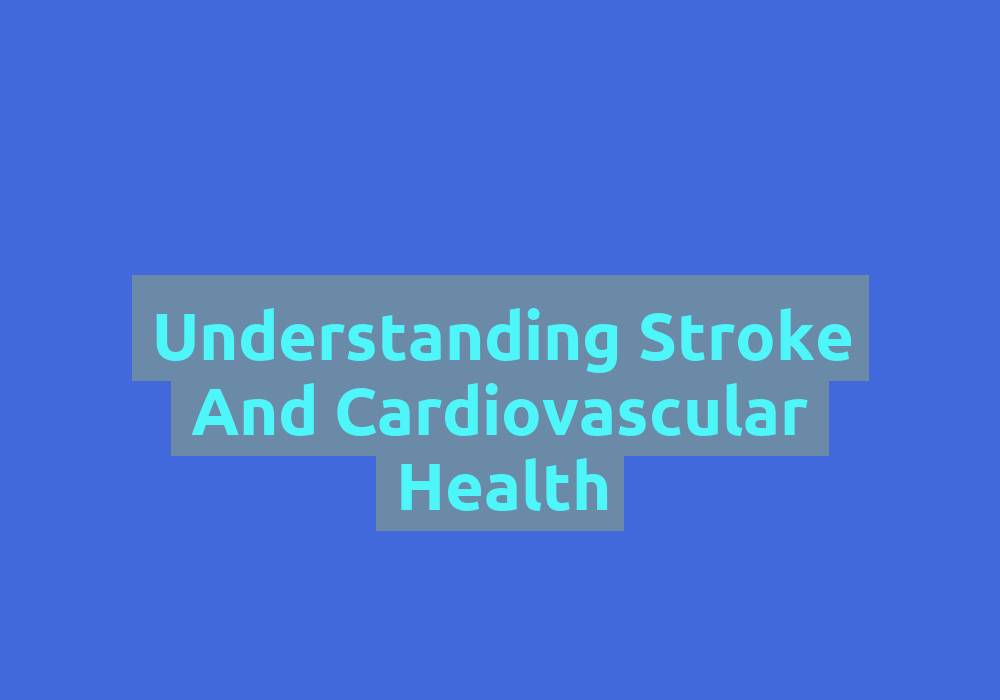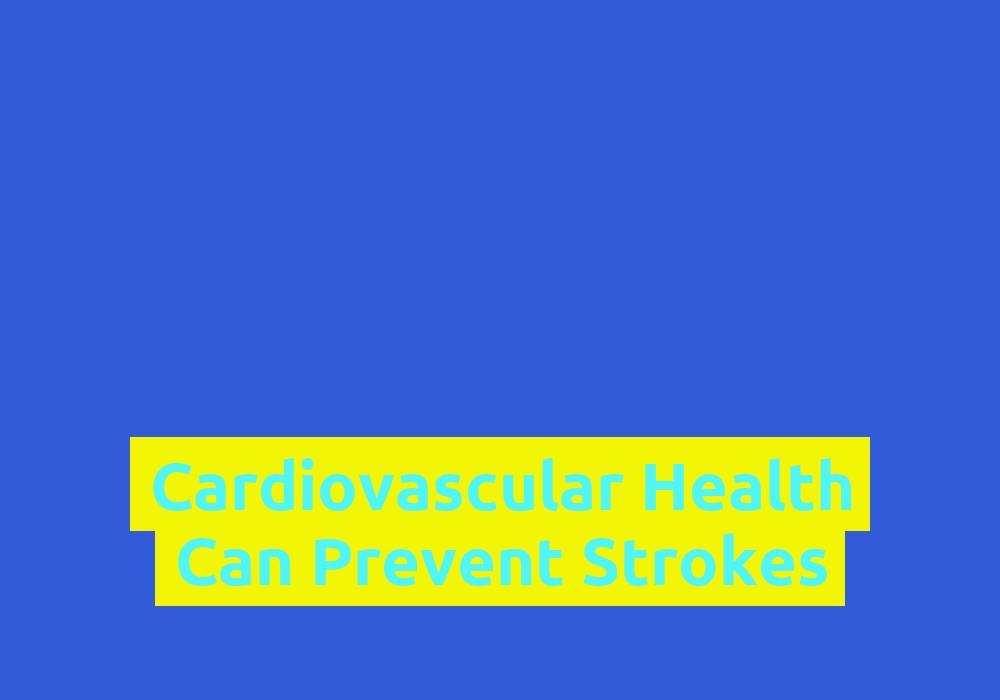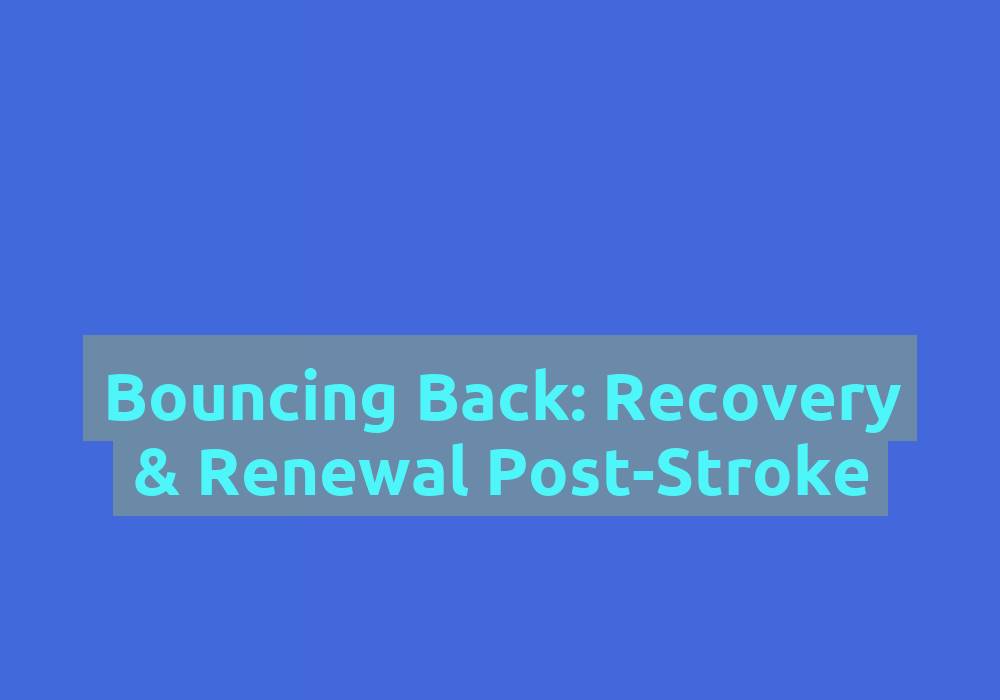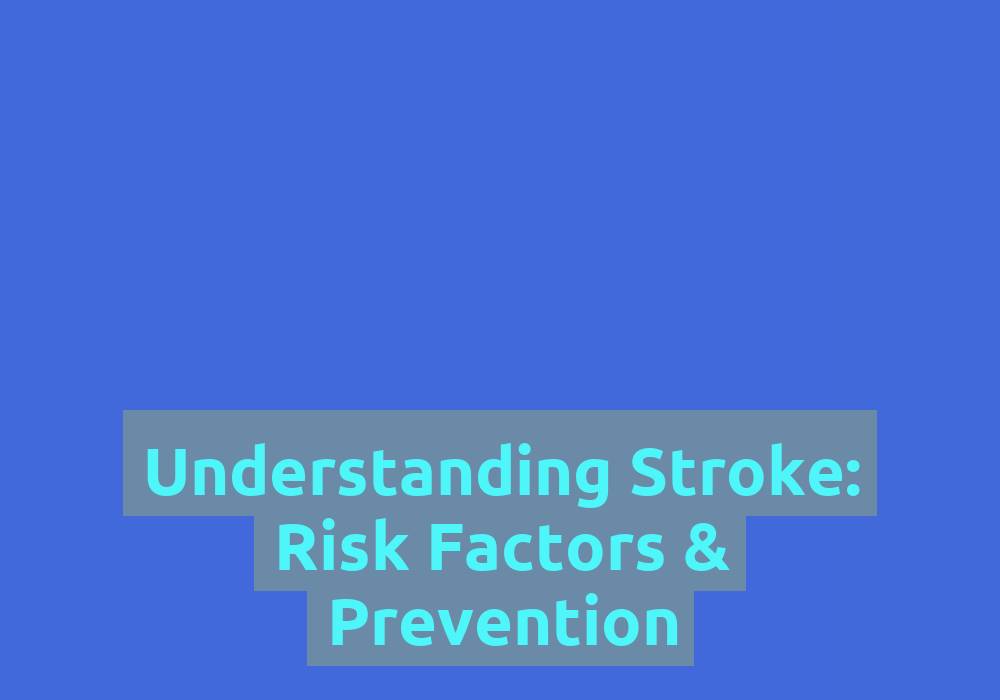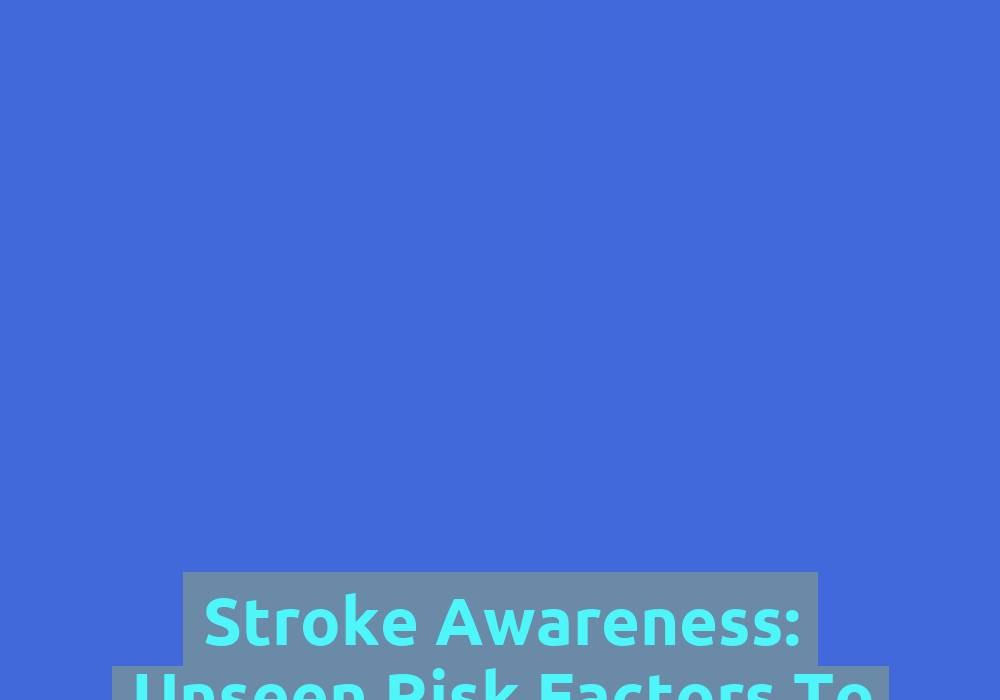Raising Awareness for Cardiovascular Health
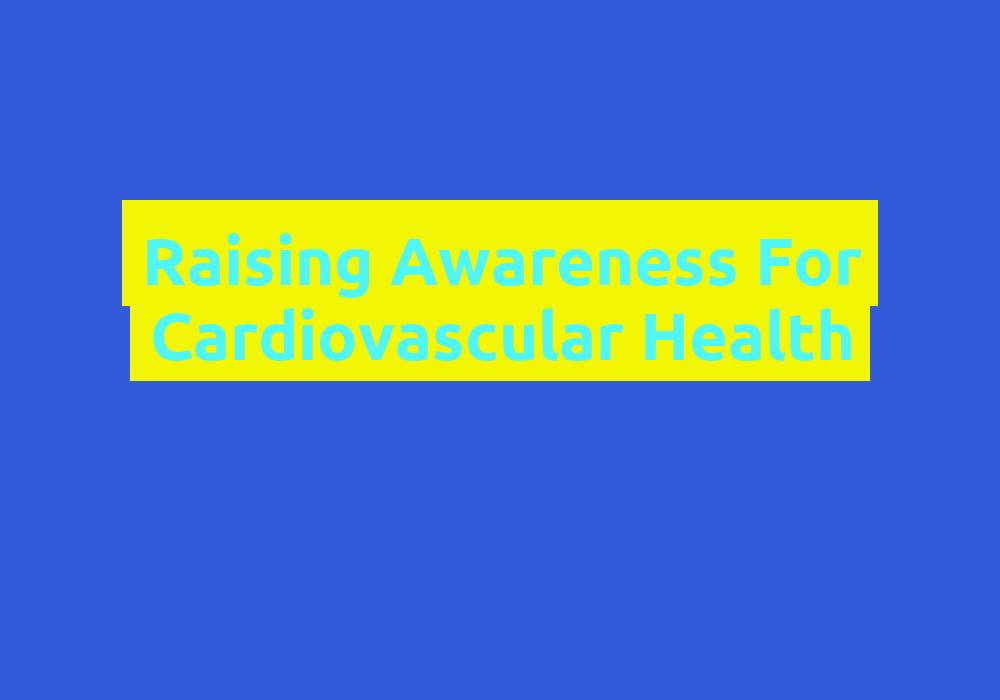
Cardiovascular health is a critical aspect of overall well-being and plays a significant role in maintaining a healthy lifestyle. With heart disease and related complications being one of the leading causes of death globally, it is essential to increase awareness about cardiovascular health. This article aims to provide comprehensive insights and valuable information about cardiovascular health, its importance, risk factors, preventive measures, and available treatments.
Understanding Cardiovascular Health
Cardiovascular health refers to the well-being of the heart and blood vessels, encompassing various aspects such as heart function, blood circulation, and maintaining optimal cholesterol and blood pressure levels. It is crucial to maintain a healthy cardiovascular system as it directly impacts the overall functioning of our body.
The Importance of Cardiovascular Health
A healthy cardiovascular system ensures efficient blood flow, supplying oxygen and nutrients to all organs and tissues. It is vital for maintaining optimal bodily functions, including:
Heart Functioning: A healthy heart efficiently pumps blood, ensuring a steady supply of oxygen and nutrients to all parts of the body. This reduces the risk of heart-related complications such as heart attacks, heart failure, and arrhythmias. It is important to take care of our heart health by adopting a healthy lifestyle and undergoing regular check-ups to detect any potential issues early on.
Brain Health: Adequate blood flow to the brain ensures optimal cognitive function and reduces the risk of stroke and dementia. When the cardiovascular system is compromised, it can lead to restricted blood flow to the brain, increasing the chances of cognitive decline and neurological disorders. By maintaining cardiovascular health, we can protect our brain health and enhance cognitive abilities.
Maintaining Blood Pressure: A healthy cardiovascular system helps regulate blood pressure, preventing hypertension, and reducing the risk of kidney damage, heart disease, and stroke. High blood pressure puts strain on the heart and blood vessels, leading to various complications. By adopting a healthy lifestyle, including a balanced diet and regular exercise, we can promote normal blood pressure levels and reduce the risk of cardiovascular diseases.
Preventing Blood Clots: Proper blood circulation minimizes the risk of blood clot formation, decreasing the chances of deep vein thrombosis, pulmonary embolism, and other related conditions. Blood clots can obstruct blood flow, leading to serious health consequences. By maintaining cardiovascular health, we can ensure smooth blood circulation and reduce the risk of clot formation.
Risk Factors for Cardiovascular Diseases
Several factors contribute to the development of cardiovascular diseases. Understanding these risk factors is crucial in raising awareness and taking necessary preventive measures. Some common risk factors include:
Unhealthy Diet: Consuming high levels of saturated and trans fats, cholesterol, and excessive salt can lead to obesity, high cholesterol levels, hypertension, and heart disease. It is important to educate individuals about the importance of a balanced diet that includes fruits, vegetables, whole grains, lean proteins, and healthy fats. Limiting processed foods, sugary drinks, and excessive salt intake can significantly reduce the risk of cardiovascular diseases.
Physical Inactivity: Lack of regular exercise weakens the cardiovascular system, leading to poor blood circulation, weight gain, and an increased risk of heart disease. Encouraging individuals to engage in moderate-intensity aerobic exercises for at least 150 minutes per week, along with muscle-strengthening activities, can improve cardiovascular health and reduce the risk of heart-related complications.
Smoking: Smoking damages blood vessels, reduces oxygen supply, and increases the risk of blood clots, heart attacks, and strokes. Spreading awareness about the harmful effects of smoking and providing support for smoking cessation programs is crucial in promoting cardiovascular health. Quitting smoking can significantly reduce the risk of developing heart diseases.
Obesity: Being overweight or obese puts extra strain on the heart, increases blood pressure and cholesterol levels, and raises the risk of heart disease. Educating individuals about the significance of maintaining a healthy body weight through a combination of exercise and a well-balanced diet is essential. By adopting healthy lifestyle habits, individuals can reduce the risk of obesity-related cardiovascular diseases.
High Blood Pressure: Hypertension is a significant risk factor for cardiovascular diseases and should be monitored regularly. Regular blood pressure screenings and appropriate management of hypertension can help prevent complications and reduce the risk of heart diseases. Lifestyle modifications, including a healthy diet, regular exercise, and stress management, can contribute to maintaining normal blood pressure levels.
Diabetes: Individuals with diabetes are more prone to developing cardiovascular diseases due to the associated high blood sugar levels and other metabolic changes. It is important for individuals with diabetes to manage their blood sugar levels effectively through medication, a healthy diet, regular exercise, and regular check-ups. By controlling diabetes, the risk of cardiovascular diseases can be significantly reduced.
Family History: Genetic factors play a significant role, and individuals with a family history of heart disease have a higher risk themselves. It is important for individuals with a family history of heart disease to be aware of their increased risk and take proactive measures to maintain cardiovascular health. Regular check-ups and lifestyle modifications can help mitigate the genetic risks associated with cardiovascular diseases.
Age and Gender: Advancing age and being male (until menopause) are considered risk factors for cardiovascular diseases. As individuals age, the risk of developing cardiovascular diseases increases. It is important for older adults to prioritize cardiovascular health and adopt preventive measures to reduce the risk of heart diseases. Additionally, men are more prone to certain cardiovascular diseases until menopause, highlighting the need for awareness and preventive measures.
Promoting Cardiovascular Health
Raising awareness about cardiovascular health is crucial for promoting preventive measures and reducing the incidence of heart diseases. Here are some effective strategies:
1. Encouraging Healthy Lifestyle Habits
Educating individuals about the importance of adopting healthy habits can significantly impact cardiovascular health. This includes:
Balanced Diet: Promoting a diet rich in fruits, vegetables, whole grains, lean proteins, and healthy fats while limiting processed foods, sugary drinks, and excessive salt intake. A balanced diet provides essential nutrients and helps maintain optimal cholesterol and blood pressure levels, reducing the risk of cardiovascular diseases.
Regular Exercise: Encouraging individuals to engage in moderate-intensity aerobic exercises for at least 150 minutes per week, along with muscle-strengthening activities. Regular physical activity improves cardiovascular fitness, enhances blood circulation, helps maintain a healthy weight, and reduces the risk of heart diseases.
Avoiding Smoking: Spreading awareness about the harmful effects of smoking and providing support for smoking cessation programs can significantly reduce the risk of cardiovascular diseases. Quitting smoking improves cardiovascular health and decreases the chances of heart attacks, strokes, and other related complications.
Maintaining Healthy Weight: Educating individuals about the significance of maintaining a healthy body weight through a combination of exercise and a well-balanced diet. Obesity puts strain on the heart and blood vessels, increasing the risk of heart diseases. By achieving and maintaining a healthy weight, individuals can reduce the burden on their cardiovascular system.
Stress Management: Promoting stress-reducing techniques such as yoga, meditation, and seeking support from friends, family, or mental health professionals. Chronic stress can negatively impact cardiovascular health. By managing stress effectively, individuals can reduce the risk of heart diseases and improve overall well-being.
2. Regular Health Check-ups
Encouraging individuals to undergo regular health check-ups is essential for early detection and prevention of cardiovascular diseases. Regular blood pressure, cholesterol, and blood sugar screenings, along with other necessary tests, can help identify any potential risks early on. Early detection allows for timely intervention and appropriate management of cardiovascular health.
3. Public Awareness Campaigns
Organizing public awareness campaigns through various mediums such as social media, television, radio, and community events can effectively reach a wide audience. These campaigns can provide information about risk factors, symptoms, and preventive measures, empowering individuals to make informed decisions about their cardiovascular health. Public awareness campaigns can also address common misconceptions and provide accurate information regarding cardiovascular health.
4. Collaborating with Healthcare Professionals
Collaborating with healthcare professionals including doctors, nurses, and dietitians can greatly enhance the impact of awareness campaigns. These professionals can provide accurate and evidence-based information, conduct health screenings, and offer guidance on managing cardiovascular health effectively. By working together, healthcare professionals and awareness campaigns can educate individuals, provide necessary support, and promote cardiovascular health as a priority.
Conclusion
Raising awareness for cardiovascular health is crucial in combating the rising incidence of heart diseases. By understanding the importance of cardiovascular health, recognizing risk factors, and promoting preventive measures, we can significantly reduce the impact of cardiovascular diseases on individuals and communities. Encouraging healthy lifestyle habits, regular health check-ups, public awareness campaigns, and collaboration with healthcare professionals are effective strategies to promote cardiovascular health and ensure a better quality of life for everyone.
1. What is cardiovascular health?
Cardiovascular health refers to the well-being of the heart and blood vessels, including heart function, blood circulation, and maintaining optimal cholesterol and blood pressure levels. It is crucial to maintain a healthy cardiovascular system as it directly impacts the overall functioning of our body.
2. Why is cardiovascular health important?
Cardiovascular health is important because it ensures efficient blood flow, supplying oxygen and nutrients to all organs and tissues. It is vital for maintaining optimal bodily functions, including heart functioning, brain health, maintaining blood pressure, and preventing blood clots.
3. What are the risk factors for cardiovascular diseases?
Several risk factors contribute to the development of cardiovascular diseases, including an unhealthy diet, physical inactivity, smoking, obesity, high blood pressure, diabetes, family history, age, and gender.
4. How can cardiovascular health be promoted?
Cardiovascular health can be promoted by encouraging healthy lifestyle habits such as a balanced diet, regular exercise, avoiding smoking, maintaining a healthy weight, and managing stress. Regular health check-ups, public awareness campaigns, and collaboration with healthcare professionals are also effective strategies for promoting cardiovascular health.
